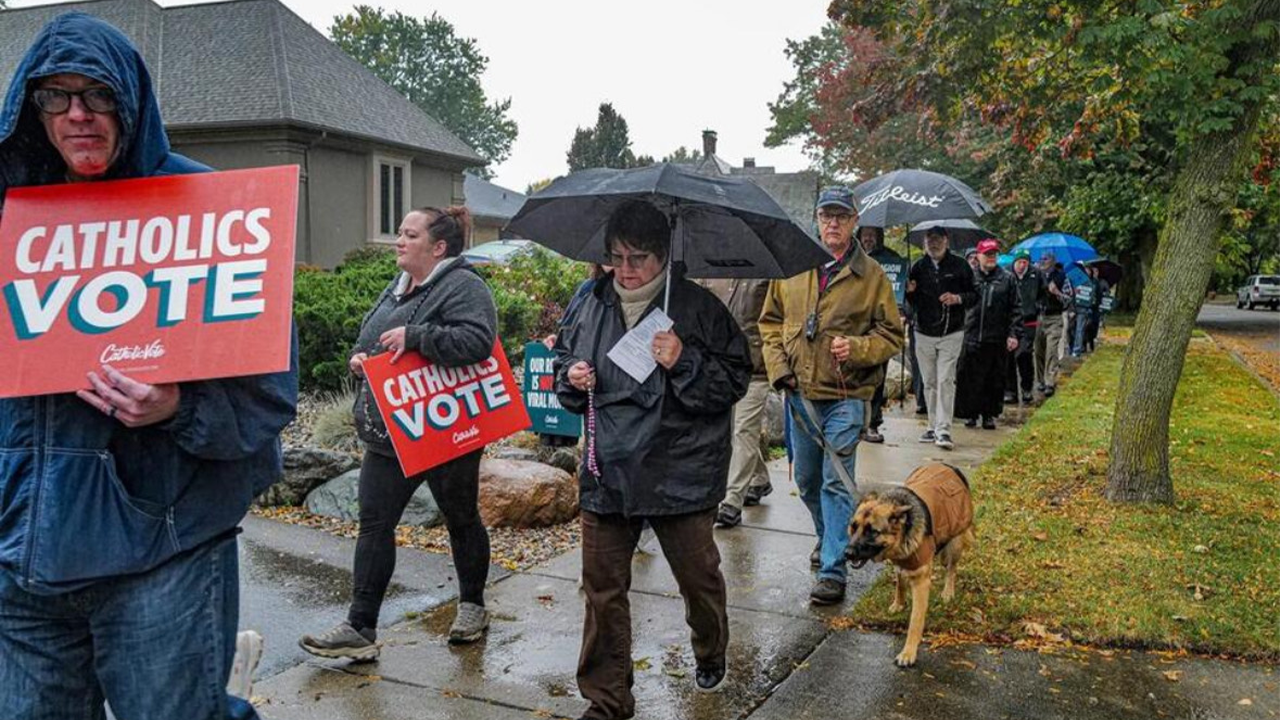Finance
Gaia platform aims to fill the climate finance gap

- International institutions have introduced a new blended finance platform for climate-linked investments in developing countries
- Lack of knowledge and adequate risk-protection mechanisms for investors is keeping funds from reaching the world’s least developed countries
- Sustainable finance needs to go beyond the need for fast profits and instead focus on long-term goals
Banks and financial institutions looking to make climate-linked investments in developing countries may be wary of the potential risks attached to some of the poorest jurisdictions around the world.
Looking to bridge the climate finance gap between the global north and the global south, a group of institutions that include Japanese bank MUFG, Canadian financial solutions firm FinDev and a consortium of UN partners have launched Gaia, a $1.5bn platform designed to bring in climate-linked investments to support developing countries.
The new platform, which takes its name from the ancient Greek word for Earth, is a blended finance tool designed to provide long-term investments for climate mitigation and adaptation, targeting some of the most vulnerable countries in the world.
Expected to launch in the second quarter of 2024, Gaia will direct 70% of its portfolio investments to loans for climate adaptation projects, with a further 25% specifically directed to the world’s least developed countries (LDCs).
The platform aims to help institutions overcome some of the barriers that might hinder transactions from private institutions to climate-related projects. The model uses a mixture of commercial and concessional capital sources, creating a structure that can be replicated in other segments of the market.
Mitigating investment risks
While climate change is a worldwide phenomenon, it does not affect every country in the same way. LDCs and nations with low per capita income are more likely to feel the worst effects of rising temperatures, which can have repercussions that stretch across the social, economic and political spheres.
At the same time, investments in LDCs are seen as riskier than other types of transactions. A report by the Swedish Ministry of Foreign Affairs says that the business environment of LDCs can compromise the investor’s ability to manage commercial risks with the same level of efficiency as in developed countries. This, in return, requires more financial support for investors.
Christopher Marks, head of portfolio solutions, innovative finance and growth markets for Europe, the Middle East and Africa at MUFG, says that LDCs have had difficulty attracting mainstream private investors because of a lack of familiarity with their operating environments, and because these environments carry real and perceived risks that might be difficult for firms to incorporate at this stage. In that environment, creating an “appropriate balance of risk and reward” for investors is a core challenge for platforms like Gaia, he says.
“The capital structure of our platform has a robust layer of first loss equity provided by our public partners, which is the essential purpose of blending concessional public capital in climate and Sustainable Development Goals funds — notably, the platform includes a significant equity commitment of $150m from the UN Green Climate Fund as well as an equity investment from FinDev Canada. Senior lenders can also benefit from arranged commercial insurance cover to provide an extra layer of protection,” says Mr Marks.
Through these layers of equity protection and commercial insurance around its portfolio, the Gaia platform is able to transform individual country risks that may be rated as B or BB — which denote an elevated chance of default of a nation’s credit obligations — and transform that into a solid BBB.
Paulo Martelli, vice-president and chief investment officer at FinDev Canada, says that what sets Gaia apart from similar platforms is a capital structure that aims to go beyond the “conventional risk-return appetite” of investors. “That’s why we don’t describe Gaia as just a fund, but a tool that helps different entities come together and partner up with other entities to help fund climate mitigation projects,” he says.
Mr Martelli adds that Gaia has been designed with several other facilities that will help it address some of the main risk concerns for its clients. “In terms of foreign exchange risks, we have set up a fund that will help mitigate some of the outstanding costs and expenses for investors, while we have also established a specific committee to deal with environmental, social and governance-related issues,” he says.
The Gaia platform creates a structure that enables investors who would not ordinarily invest in developing markets to enter new jurisdictions. “What makes Gaia so special is that it is a source of finance that wouldn’t ordinarily be available. Through the structure of this platform, we have figured out how to bring it to the table,” Mr Martelli adds.
Climate mitigation investments
Annual climate finance flows have been on a growing trend over the years, reaching $653bn on average in 2020. Although public and private climate finance has almost doubled since 2011, according to a report from the Climate Policy Initiative, to reach climate objectives set out by the Paris Agreement, climate investments will have to increase at least sevenfold by the end of this decade.
The UN says that foreign direct investments saw a 77% uptick worldwide in 2021, but only 19% went to LDCs.
Climate adaptation and mitigation projects in LDCs are long-term initiatives that often do not have profit turnover as quickly as other sustainability-linked projects. “Adaptation projects are not limited to something as simple as building a seawall or restoring mangrove forests — they are much more complex than that,” says Mr Martelli.
“They include projects dealing with wastewater, electricity grid resilience, soil rehabilitation, food storage, upgrading existing infrastructures to make them stronger against the elements, and the list goes on,” he explains.
Taking all of this into account, investors need to be aware of the fact that they are setting themselves up for a long game where short-term results are not always guaranteed. Mr Martelli says that, regarding the full disbursement of capital by Gaia, investors should expect a ramp-up period of around seven years. Although he believes that growing interest in the platform and adaptation projects will potentially help reduce the ramp-up period.
Nevertheless, Mr Marks believes that while sustainability-linked financing in major markets could provide similar returns in the current rate environment, investors should not base their business decisions solely on profitability. “It may be easier to invest in a wind project in Mexico or a solar field in a country like Chile with a very strong investment grade — but there has to be, at the level of the investor, a basic sensibility of wanting to follow the direction of the climate debate,” he says.
The world will unarguably be a more complicated place 10 years from now, he adds, and big institutions will have to learn how to make more of these climate adaptation and mitigation investments over time.
“These projects are important, and the argument that I make to some of our senior investors is that these are, in fact, small investments to make today — whether $50m, $100m or more — which is nothing compared to the amount of forward-looking sector knowledge that you’re going to get in addition to returns,” says Mr Marks.

Finance
Jim Justice Tied West Virginia Coal to Global Financial Capital

West Virginia governor James C. Justice II seeks to fill the Senate seat left open by Joe Manchin’s retirement. “Big Jim” Justice, like Manchin, is a coal executive and former Democrat. But in contrast to Manchin’s run-of-the-mill crony capitalism, Justice has pursued innovative business practices that pushed the mines of West Virginia deep into the grasp of global financial capital.
Justice did it, he says, to keep his mines open and his businesses out of bankruptcy. But Justice’s strategy has meant that a string of unrelated third parties — JPMorgan, a Russian steel oligarch, Credit Suisse — get a little bit richer every time a coal miner goes to work for Justice. And West Virginians — local governments, Justice’s miners, small businesses, and local banks — hold the bag. If this is the way to stay out of bankruptcy, Justice’s prescribed treatment is worse than the illness.
How did Big Jim make such a big mess, and why? To be fair, it is not all his fault. Jim Justice’s business fortune, like the fortune of West Virginia itself, is impossible to understand without reference to the ups and downs of global commodity markets. Dealing with these commodity cycles has been the central preoccupation of the coal business for several decades. If the unemployment rate is the most important economic indicator for the world’s industrial regions, the price of commodities is the most important economic indicator for its resource-extraction regions.
Justice is a creature of resource extraction. Justice’s money comes from two sources: coal and agriculture. He inherited his stake in both the coal and agriculture industries from his father. Both coal and farming are commodity businesses.
The price fluctuation of coal has several implications for those who want to make money mining it. Coal mines are not all created equal and can be broadly sorted into two classes. There are mines that are highly productive, typically meaning that they are highly mechanized with expensive “longwall” mining machinery imported from Germany. These mines usually continue to operate when coal prices drop because their labor inputs are low and their capital costs (interest payments) remain the same whether the price is high or low. High-productivity, mechanized mines are typically operated with union labor.
Then there are low-productivity mines — sometimes called “doghole” mines. Smaller and less mechanized dogholes tend to shut down when the price of coal drops. Doghole mines close because their marginal cost (that is, the cost that they have to spend to mine an additional ton of coal) is higher than that of the high-productivity mines. The existence of doghole mines ensures that the price of coal does not rise too high. Doghole mines don’t require large investments, which means that when the price of coal rises above normal, a whole host of them open up. Doghole mines are typically nonunion.
Throughout most of the twentieth century, many large, high-productivity mines were owned and operated by large industrial corporations that consumed coal, like US Steel, Ford, and others. When demand for their goods increased, they didn’t open new mines; rather, they turned to the market and purchased coal from the doghole mines. During the industrial downturn of the 1970s and 1980s, this system of major, company-owned mines began to break down. Changes in the geography of world industrial production led to the decline of domestic coal-consuming industries. US Steel and similar companies stopped investing in coal production and shed their coal assets.
A new class of coal companies stepped in to develop and operate the expensive, high-productivity mines. Pure-play coal companies like Massey and Peabody expanded rapidly into central Appalachia in the 1980s. Bluestone Industries, owned by Big Jim’s father, was part of this growth.
Unlike the older major producers, the new companies engaged in both high-productivity and doghole mining — a business strategy that mitigated against the fluctuations in the price of coal. Owners of high-productivity mines had never been able to see the full benefits of their investments because the doghole mines kept prices relatively low during coal booms. For a company like US Steel, this had not been a problem. US Steel was not looking to make money mining coal. It was looking to secure a reliable supply of coal. The new companies, including the Justice family’s Bluestone, had different incentives.
As the major industrials exited coal production and left the mining business to Massey, Peabody, Bluestone, and other coal-exclusive businesses, the problem of how to increase profit margins during upswings became acute. The answer was to innovate a new method of mining that combined the low capital intensity of the doghole mine with the low marginal cost of the high-productivity mine.
That method was mountaintop removal. Mountaintop removal is exactly what it sounds like: a process of removing a mountain top — “overburden,” in industry speak — so that coal can be mined with bulldozers and front loaders rather than expensive, specialized underground mining equipment. Mountaintop removal could not fully match the cost efficiency of a well-run, highly mechanized underground mining operation, but it certainly beat the older small-scale, low-productivity mines — sometimes called “doghole” mines — that it succeeded. And it beat high-intensity mines on capital cost: big trucks, bulldozers, front loaders, and dynamite are cheaper and more liquid than specialized underground mining equipment. Mountaintop removal is far more environmentally destructive than other methods of mining coal.
By the 2000s, the benefits of that companies like Massey, Peabody, and others derived from mountaintop removal and the diversification of mining interests had played out. They succeeded in taking control of the coal market away from the large industrials, but the inevitable question of question of how this new arrangement might fare in a volatile coal market was unanswered.
In 2009, the problem was a high price. Justice decided to sell out. He found a buyer in the Russian steelmaker Mechel, which, like many large Russian industrial concerns, maintained close ties to Vladimir Putin and, unlike most American industrials, was growing. The sale of Bluestone’s assets to Mechel went through in 2009, before the financial crisis hit the commodity markets. Bluestone’s coal assets received a high price: $425 million and preferred shares in Mechel.
Justice was riding high: he subsequently purchased the ailing luxury Greenbrier resort in White Sulphur Springs, West Virginia, a longtime haunt of the Washington elite. Justice relished the company that he could keep as the owner of a big fancy hotel with a large bank account.
But the party didn’t last long. By 2015, the financial crisis had hit the commodity markets. The coal market was sluggish, and global industrial demand (excluding China) recovered very slowly. Mechel, holding what was at that point a money-losing business, sold the properties back to the Justice family for $5 million paired with per-ton royalty payments on future coal sales.
Five million dollars was a low price, but it probably wasn’t low enough. The properties were saddled with delayed upkeep and unpaid invoices. When Big Jim resumed leadership of the Bluestone coal assets, the old problems of navigating a coal company through commodity cycles resumed. Justice did not want to pull money from any corner of his business empire in order to operate his coal business in a sluggish market. So he turned to the burgeoning world of shadow banking that had grown up in the era of low interest rates.
Justice has since defaulted on the royalty payments, landing him in court. A judge recently ordered the seizure of one of the Justice family helicopters that Big Jim’s son Jay regularly taxied around Beckley, West Virginia. (Justice’s Democratic opponent in this year’s Senate race has suggested that Justice’s ongoing legal entanglement with Mechel could compromise his ability to serve as a US Senator.)
To solve the financial problem created by the repurchase of its coal properties, Bluestone found a partner in Lex Greensill of Greensill Capital. In the Donald Trump era, Greensill Capital was a darling of the transatlantic banking world. Lex Greensill was himself deeply familiar with global commodity markets, having grown up on a sugarcane farm in Queensland, Australia (which also grew watermelons, he likes to add in a folksy flourish). He moved to London in the heady days before the financial crisis, where he worked for Morgan Stanley and Citigroup.
Founded in 2011, Greensill Capital was an “innovative” supply chain lender. Supply chain lending is a straightforward business. Sellers of goods like Bluestone make deliveries of their goods and then issue invoices to the purchaser, which are usually due sixty days from delivery. Supply-chain lending is a very useful tool for a business that has liabilities that recur regularly but have uneven payment. That business, say Foxconn, might need to take out a loan to expand its operation to produce a large shipment of iPhones. Foxconn would invoice Apple after the delivery and could expect to be paid at some point in the coming months, but it might already have interest payments due on the loan. Enter supply chain finance to smooth the cash flow problem. Foxconn could take a copy of their invoice to Greensill and get cash now.
The fees and interest rates that Greensill regularly charged on transactions like these were quite high. In the low-interest-rate environment of the late 2010s, Greensill was able to borrow money at low rates and return a much higher rate on this kind of supply chain financing. With this model, Greensill attracted enormous investments. The largest private investment fund in the world, SoftBank’s Vision Fund (funded by the Saudis), contributed $1.5 billion to the business, seeking the high returns that Greensill could generate. Greensill quickly started to roll out supply chain financing to companies like Bluestone.
Only some companies are well-suited for supply chain finance; Bluestone is not one of them. Unlike an Apple iPhone supplier, Bluestone does not go deeply into debt in order to finance coal shipments. Thanks to the changes brought about by mountaintop removal, coal mining is now an asset-light business. Expansion of mining operations ought not to impose major financial obligations. A partnership with Greensill was incorrect on the fundamentals.
Nevertheless, over the course of five years, Greensill lent Bluestone $850 million. As their relationship deepened, the loans morphed from clear-cut supply chain finance (wherein Bluestone simply got payment earlier than they might for coal that had been already shipped) into something else. As Bloomberg’s Matt Levine has reported, based on court documents, Bluestone started submitting and Greensill started accepting invoices for coal that had not been shipped. In fact, it had not even been mined, or even ordered from any coal customer whatsoever.
Justice’s strategy stood in stark contrast to all of his competitors in the coal business, which fell like dominoes to bankruptcy. Following a methane explosion that killed twenty-nine miners in 2010, Massey was acquired by Alpha Natural Resources. Alpha went bankrupt in 2015 along with the two largest coal companies in the nation, Peabody and Arch.
The short-term effect of Bluestone’s relationship with Greensill was to allow the Justices to continue operating without very much attention to their profit margin. Greensill treated Bluestone like a growth tech stock. To convince Greensill to continue lending, all Bluestone and the Justices had to do was invent future growth prospects.
For a coal company, the idea that one should run a deficit in the short term with the hope of future growth — the logic of tech company finance — is silly. It is silly not because betting on coal mining growth in the context of global warming is a bad bet. (It is a bleak, nihilistic bet, but it may win the day.) What makes the structure of the Greensill-Bluestone relationship incorrect, rather, is the idea that future profits in coal mining require running present-day losses. There is little reason to think that, should the market take an upswing, Bluestone would be particularly well-placed to take advantage of that upswing simply because it had continued operating when it perhaps should not have. And yet that was an implicit assumption of the relationship.
Despite its obvious flaws, that assumption would never be tested. As the consequences of the COVID-19 pandemic wound through the financial system, Greensill faced increased scrutiny from lenders and insurers. Credit Suisse froze $10 billion in funds linked to the company in March of 2021. Greensill went belly-up soon after. The loans that had been made to Bluestone by Greensill were now picked up by others, including the Swiss bank UBS.
In the process of tying Bluestone to Greensill, the Justice family made a huge fiasco, not just for Bluestone Industries but for West Virginians.
Bluestone has a tendency to stiff those who send them an invoice or a time card. The debt to Greensill made the problem worse. Today, among the myriad parties seeking overdue payment from Bluestone is Wyoming County, West Virginia. Wyoming County is a coal county, population 20,527, where the median income is $20,607. In recent years, when it wasn’t using COVID money from the federal government, Wyoming County’s school board has been balancing its budget by selling its property after shuttering schools and offices. In part due to the inability of local governments to fund it appropriately, the local jail is a death trap, with suicides and murders (perpetrated by both inmates and correctional officers) at extraordinarily high levels. Bluestone owes hundreds of thousands of dollars in taxes (largely tangible property tax, presumably levied on mining equipment) to Wyoming County.
Justice laments the fact that he regularly pays Russian taxes before he pays West Virginia taxes, but he defends his financial strategy: “If you’re really fair and you’ll step back from it, you’ll say ‘Well, when things were really tough, why didn’t they take bankruptcy like every coal company almost in the land that was in trouble that wrote off hundreds and hundreds of millions, if not billions of dollars.’ And we didn’t do it.”
Bluestone has not yet declared bankruptcy. Beyond that, much is muddy: Why should Swiss bankers, Saudi princes, and Russian oligarchs get paid before Wyoming County teachers? Because Bluestone Industries just didn’t want to declare bankruptcy?
Finance
Two big homebuilders missed Wall Street estimates on a key metric — here's why
Housing demand has been hard to forecast even as mortgage rates have declined. Just take a look at homebuilders’ quarterly results so far this earnings season.
Two of America’s largest homebuilders, Lennar (LEN) and KB Home (KBH), reported third quarter net new home orders that have fallen short of Wall Street expectations.
Net new orders represent the number of new sales contracts that have been finalized and signed by buyers minus customer home order cancellations booked for the period. Investors and analysts pay close attention to this figure because its a leading indicator for homebuilders on housing activity.
Lennar, the nation’s second-largest homebuilder, said last month that its net new orders for the quarterly period ending Aug. 31 rose 4.7% from the prior year to 20,587. That fell short of analysts’ forecasts of 20,827 orders, per Bloomberg data.
Homebuilder KB Home also reported in September that net orders for the period ending Aug. 31 were a disappointment. The builder said orders fell 0.4% from the prior year to 3,085, lower than analysts’ estimates of 3,345 orders.
Part of the reason for the misses is that it’s been hard to determine how much recent mortgage rate movements would affect buyer demand. Mortgage rates have stayed stuck between 6% and 7% this year. And in June, rates were toggling just above or below 7%.
Read more: When will mortgage rates go down? A look at 2024 and 2025.
“Maybe shame on us for not modeling it more clearly, but June and July were clearly challenging months,” John Lovallo, senior equity research analyst at UBS, told Yahoo Finance in an interview.
From a buyer’s perspective, “there was uncertainty about where rates were going. There was uncertainty about where the economy and the Fed were going, and there was growing uncertainty about the election,” Lovallo added.
The uncertainty doesn’t appear to be going away despite the Federal Reserve’s jumbo interest rate cut in September. Mortgage rates had already been on the decline as investors had bet on a rate reduction ahead.
It’s unclear how much they’ll fall. Data from Freddie Mac shows the average 30-year fixed mortgage rate jumped by 20 basis points to 6.32% last week. This marks the biggest week-over-week increase since April.
Read more: Is this a good time to buy a house?
Goldman Sachs revised its year-end forecasts in early October for 30-year conforming mortgage rates, lowering them to 6% for this year and 6.05% for 2025, down from the previous estimates of 6.5% and 6.1%.
The firm’s strategists said in the note that there’s “limited room” for major declines. They think “the decline in mortgage rates has largely run its course.”
Lovallo warned that it’s highly likely that the other homebuilders will report misses on Q3 net orders due to rate volatility this summer. More builders are gearing up to report quarterly earnings in the next few weeks with PulteGroup (PHM) and NVR (NVR) reporting on Oct. 22 and DR Horton (DHI) on Oct. 29.
Dani Romero is a reporter for Yahoo Finance. Follow her on X @daniromerotv.
Click here for the latest stock market news and in-depth analysis, including events that move stocks
Read the latest financial and business news from Yahoo Finance
Finance
South African former finance minister Tito Mboweni dies at 65

JOHANNESBURG (Reuters) – South Africa’s former finance and labour minister and first Black central bank governor Tito Mboweni has died aged 65 following a brief illness, the presidency said late on Saturday.
Mboweni was an anti-apartheid activist as a student who later became democratic South Africa’s first labour minister from 1994 to 1999 under former President Nelson Mandela.
He then served as governor of the South African Reserve Bank for a decade from 1999, and later as finance minister from 2018 to 2021 under President Cyril Ramaphosa.
“His role in shaping our democratic future particularly during the dying days of apartheid, cannot be overstated,” said his party, the African National Congress, describing him as a trusted voice in the economic debates that framed the transition to democracy.
Mboweni helped establish the post-apartheid labour legislation that lay the foundation for collective bargaining and labour courts to uphold worker rights, the ANC said.
As central bank governor he oversaw the introduction of inflation targeting to help the bank achieve price stability.
He was a close ally of Ramaphosa and served on the ANC’s National Executive Committee, which handles party decisions.
“Given his sense of vitality and energetic and affable engagement with fellow South Africans, Dr Mboweni’s passing at 65 comes as a shock,” said Ramaphosa in a statement.
“We have lost a leader and compatriot who has served our nation as an activist, economic policy innovator and champion of labour rights.”
(Reporting by Nellie Peyton; Editing by Emelia Sithole-Matarise)
-

 Health1 week ago
Health1 week agoHealth, happiness and helping others are vital parts of free and responsible society, Founding Fathers taught
-

 Sports1 week ago
Sports1 week agoFreddie Freeman says his ankle sprain is worst injury he's ever tried to play through
-

 News1 week ago
News1 week agoLebanon says 50 medics killed in past three days as Israel extends its bombardment
-

 Entertainment4 days ago
Entertainment4 days agoHold my beer can: Museum says a worker thought unique art installation was trash
-

 Entertainment5 days ago
Entertainment5 days ago'The Office' star Jenna Fischer reveals private breast cancer battle: 'I am cancer free'
-
/cdn.vox-cdn.com/uploads/chorus_asset/file/25673932/462754179_560996103109958_6880455562272353471_n.jpg)
/cdn.vox-cdn.com/uploads/chorus_asset/file/25673932/462754179_560996103109958_6880455562272353471_n.jpg) Technology2 days ago
Technology2 days agoMeta suggests AI Northern Lights pics are as good as the real thing
-

 Technology4 days ago
Technology4 days agoScammers exploit grief with fake funeral streaming on Facebook
-

 Lifestyle24 hours ago
Lifestyle24 hours agoIs the free speech debate dead? Plus, the devil! : It's Been a Minute






/cdn.vox-cdn.com/uploads/chorus_asset/file/24090219/STK171_VRG_Illo_13_Normand_ElonMusk_13.jpg)








